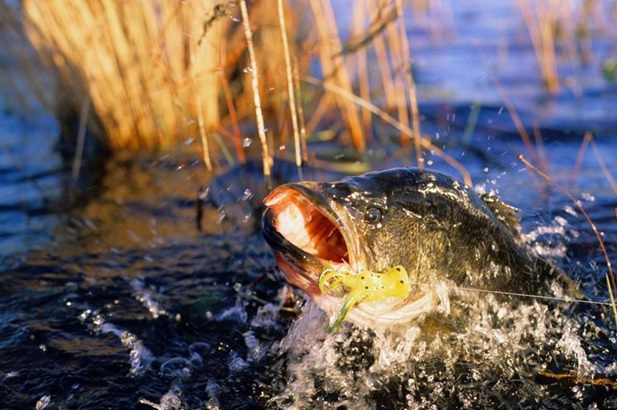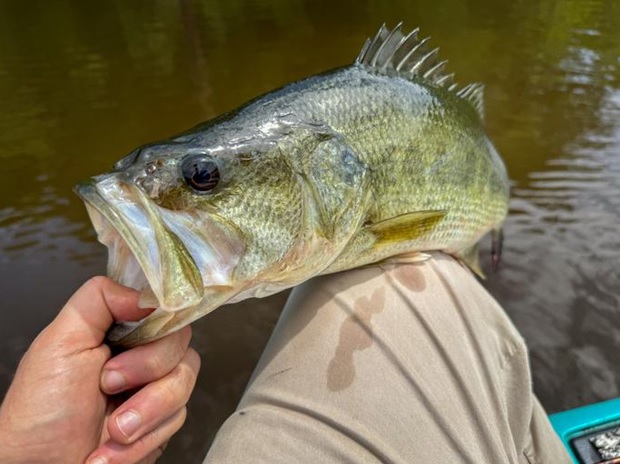Posted by Forrest on Jul 25th 2024
Summer Bassin’ in Your Native Titan 10.5
Summer’s a weird time of year to be on the water if you’re fishing. Sure, the weather can be pleasant, but when it gets really hot, it can present a challenge for bass anglers.
No one will argue that the most consistently explosive bass action of the year occurs during the spring spawn when bass are ornery, aggressive, and just generally willing to kill anything that gets near their redds.
But when the temps climb and the water gets bathtub-hot, that can shut down some of the bass activity. During the dog days, it can seem like the only cooperative fish in the lake are the bluegill.
But worry not. Your Native Titan 10.5 can get you there - you just need to know the tactics when the water gets so hot the bass become sluggish. Here are two tips that are proven to perform (much of the time) in hot weather conditions.
Find the Structure

The first tip to finding bass that are hot and sluggish is to find the structure. It might seem counterintuitive, but get into the real shallow stuff, and look for points, brush, overhangs, submerged logs and brush piles, rock, rip rap, and pretty much anything else that can hold bass.
There are two aspects to this. One is that the bass may be looking for shade or just somewhere else that they can shack up and be motionless while relatively shielded from predation. The other is that structure holds the bait that the bass eat, so they can sit there in ambush and bide their time till something gets close enough to get smacked.
That’s the ticket. Throw your bait right over or under structure, let it pause, and more often than not you’ll get hit within 5 seconds or so. If that presentation doesn’t work, cast again, twitch a few times, then bring it in.
Bass that are waiting in ambush want to expend as little energy as possible to get a meal, so you don’t want to make them chase anything. If you’re fishing a spinnerbait or a plug, cast past the structure so that your retrieve will bring it right over or under any waiting bass.
Speaking of that, there are several good baits to use when fishing in hot weather around structure. Pretty much any soft plastic will work. They can be rigged weightless, weighted, or on a jighead.
Plugs such as jerkbaits and crankbaits, as well as poppers, can also be effective, along with spinner baits and even spoons that will get reaction strikes.
All in all, though, a big plastic, rigged weightless and dropped right on the nose of a bass hiding in structure, is the technique to follow here. It will produce, even in the high heat of summer.
Go Deep
The second way to find bass in the heat is to go deep. The reason that fish will recede to deeper water is also multifactorial. On the one hand, deeper water remains cooler throughout most of the year. On the other, deeper, larger water masses have higher thermal inertia and do not change as rapidly as the shallows. Since temperature changes can shock (and even kill) fish, it makes sense why they’d flee to deeper water when the mercury is on the ascent.
Fish that seek the depths in the heat of summer are more often than not doing so to get away from the heat rather than to chase bait, although it is also conceivable that they could be feeding on schools of baitfish that have also sought open water.
If the fish are schooling in deeper water to avoid the heat, it will be harder to get a strike from them. First, you need to find them anyway. Your Native Titan 10.5, which has a built-in transducer mounting plate, makes it easy to rig a fish finder for this purpose.
Once you find the schooled up bass, which will typically be suspended in deeper water, you need to throw something at them that they’ll respond to.
One common technique is to jig a spoon or a blade bait. If the bass are feeding, the flash and flutter of a spoon mimics a baitfish and may elicit a strike. Even if they aren’t feeding, the commotion can sometimes draw a reaction.
Another technique is to rig a drop shot and a soft plastic and jig that around the bass. Vertical presentations are the key here.
Of course, sometimes you can find suspended bass in the heat but they won’t cooperate with artificials. In that case, a bait rig with a wax worm, a grub, a nightcrawler, or a chunk of cut bait may produce. Another technique is to live line a shiner or a shad, or even a small bluegill (where legal). Finicky fish are more likely to respond to a real meal than artificials, especially in the heat.
When to Fish?

Now that you know where to take your Native Titan 10.5, you need to know when to do so, as well as what to fish with, although that has more or less been covered.
As for when, if you’re fishing shallow, know this. The bass will come out of deeper water earlier in the morning and towards evening in order to feed on bait in the shallows. They also do this because the temps are usually less extreme at these times. At the same time, you can catch shacked-up bass at midday, too, so don’t write off the approach. Just know that early and late are your best times to go shallow.
During the middle of the day, many fish will seek the comforts of deeper water, so when the sun is high, that is when you should look deep for bass, especially if you can’t connect with anything in the shallows.
Gear Up Your Native Titan 10.5
These two techniques should put fish in the boat, even when temperatures are searing. Now all you need to do is gear up, pick a spot, load up the Native Titan 10.5 with some plastics, plugs, and metals, with some cut bait as a contingency, and get out there!

